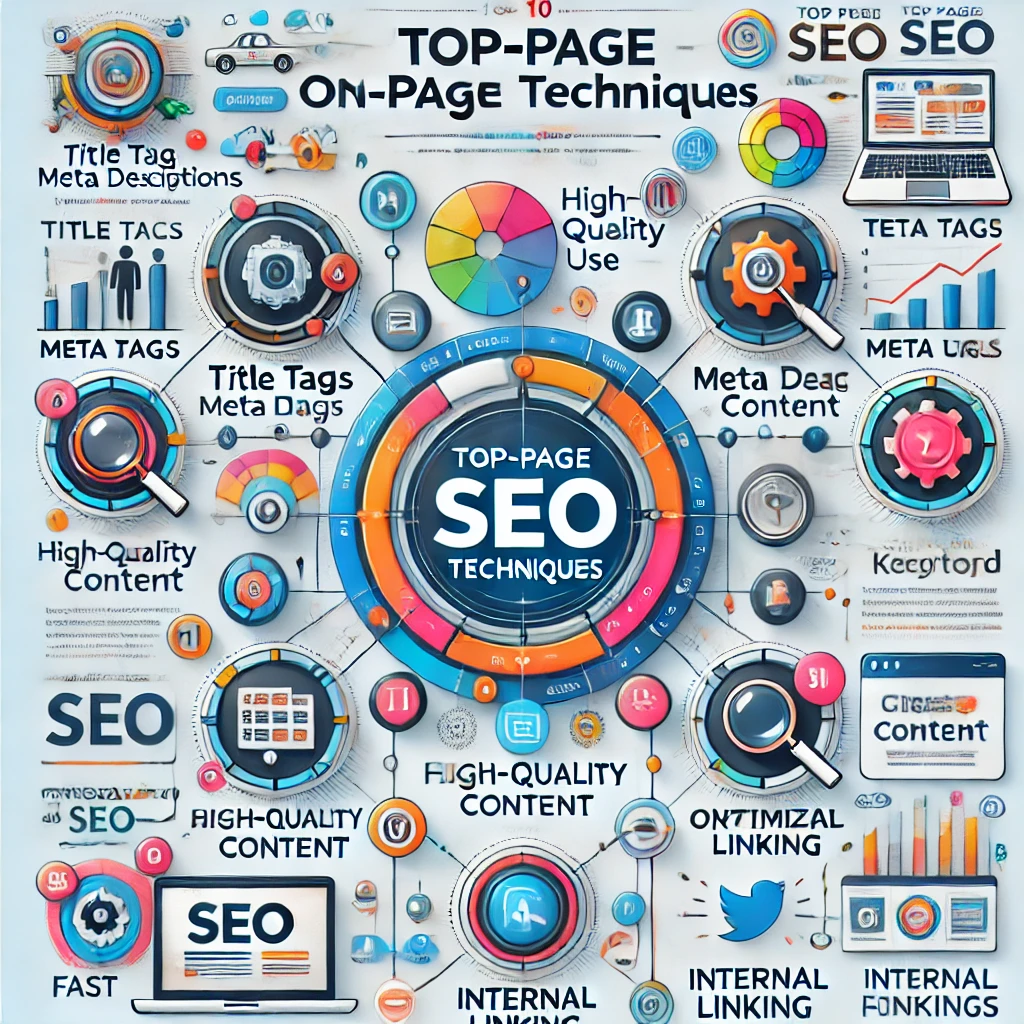
On-page SEO is a critical component of any successful SEO strategy. It involves optimizing individual pages on your website to rank higher on search engine result pages (SERPs) and drive more organic traffic. Here are the top 10 on-page SEO techniques you should implement:
1. Optimize Title Tags
- Use a unique, keyword-rich title tag for every page.
- Place the primary keyword close to the beginning of the title.
- Keep the title under 60 characters to avoid truncation in search results.
- Example: “Top 10 On-Page SEO Techniques for 2025.”
2. Write Compelling Meta Descriptions
- Summarize the page content in 150-160 characters.
- Include the primary keyword naturally.
- Make it engaging to improve click-through rates (CTR).
- Example: “Learn the top 10 on-page SEO techniques to boost your website’s rankings and drive more traffic in 2025.”
3. Use Header Tags Properly
- Structure your content with H1, H2, H3, and H4 tags.
- Use only one H1 tag per page, and include the primary keyword.
- Break content into sections using H2 and H3 for better readability and SEO.
4. Optimize URL Structure
- Create clean, descriptive, and keyword-rich URLs.
- Use hyphens (-) to separate words instead of underscores (_).
- Avoid using unnecessary parameters or long strings of numbers.
- Example: www.example.com/on-page-seo-techniques
5. Focus on High-Quality Content
- Write original, informative, and valuable content that addresses user intent.
- Aim for at least 1,500 words for comprehensive coverage, but maintain quality.
- Use tools like Grammarly and Hemingway to ensure readability and grammar accuracy.
6. Use Keywords Strategically
- Include your primary keyword in the first 100 words.
- Naturally incorporate related LSI (Latent Semantic Indexing) keywords.
- Avoid keyword stuffing—focus on seamless integration.
- Example: If the keyword is “on-page SEO,” related terms could be “meta tags,” “content optimization,” etc.
7. Optimize Images and Multimedia
- Compress images to improve page load speed.
- Use descriptive file names and include keywords (e.g., on-page-seo-tips.jpg).
- Add alt text to describe images for accessibility and SEO purposes.
- Example Alt Text: “A chart showing the impact of on-page SEO optimization.”
8. Improve Internal Linking
- Link to other relevant pages on your website to enhance navigation and reduce bounce rate.
- Use descriptive anchor text that includes keywords.
- Example: “Learn more about technical SEO strategies.”
9. Boost Page Load Speed
- Optimize your website for faster loading times using tools like Google PageSpeed Insights.
- Implement lazy loading for images and videos.
- Use a Content Delivery Network (CDN) to speed up content delivery.
10. Ensure Mobile-Friendliness
- Use responsive design to make your website accessible on all devices.
- Test your website’s mobile usability using Google’s Mobile-Friendly Test.
- Prioritize mobile-first indexing by ensuring seamless user experience on smaller screens.
Final Thoughts
By implementing these top 10 on-page SEO techniques, you can significantly enhance your website’s visibility and performance. Remember, SEO is an ongoing process, so regularly monitor your analytics, update content, and stay informed about the latest trends.
Would you like help implementing these techniques on your website?
Tags: BLOG SEO, COMPLETE SEO, OFF-PAGE SEO, TOP 10 SEO, TOP SEO Technique